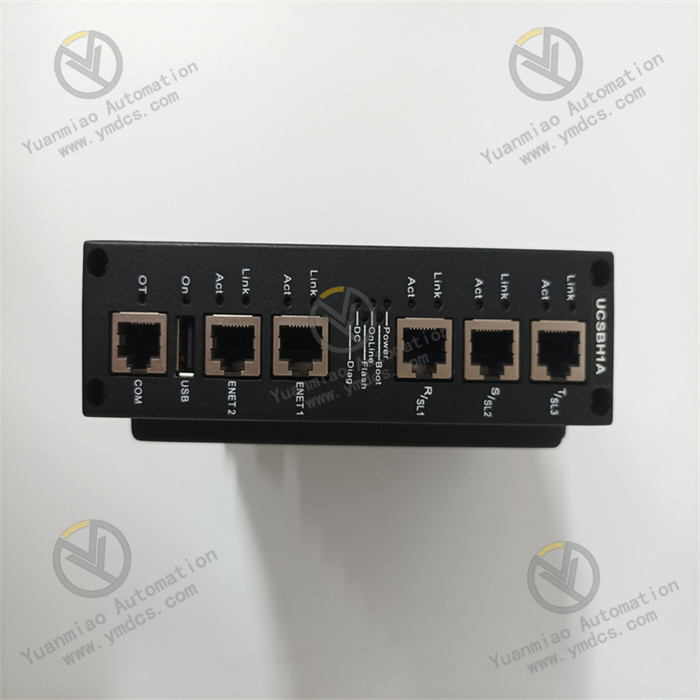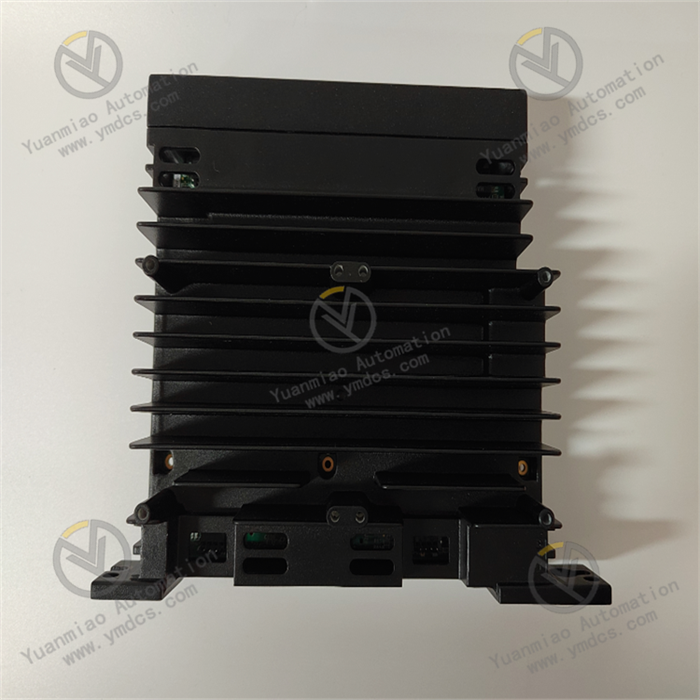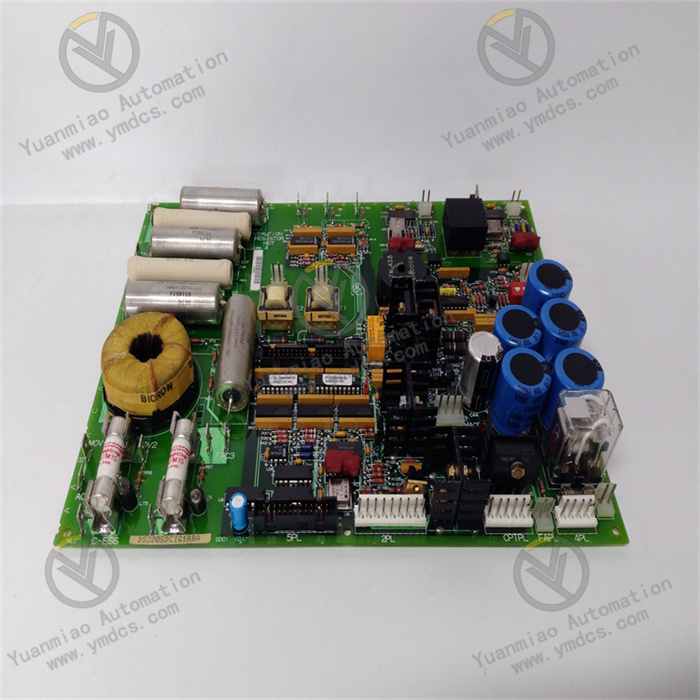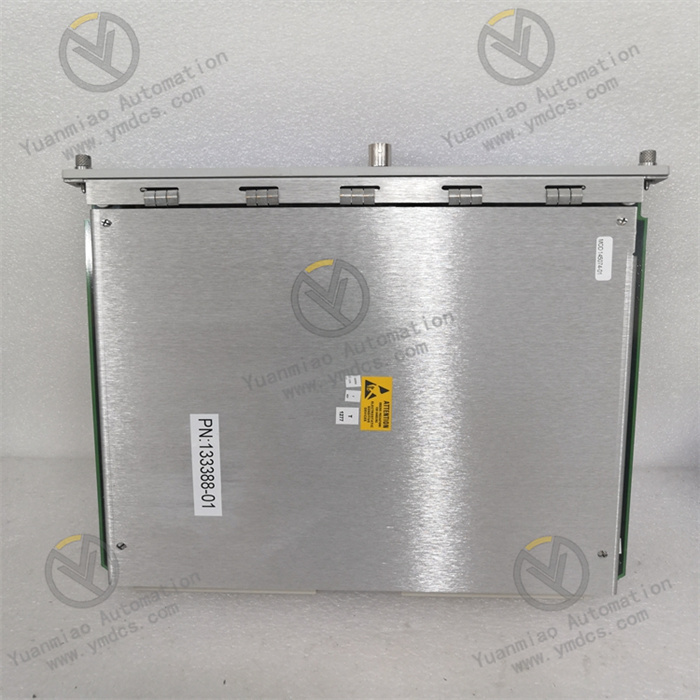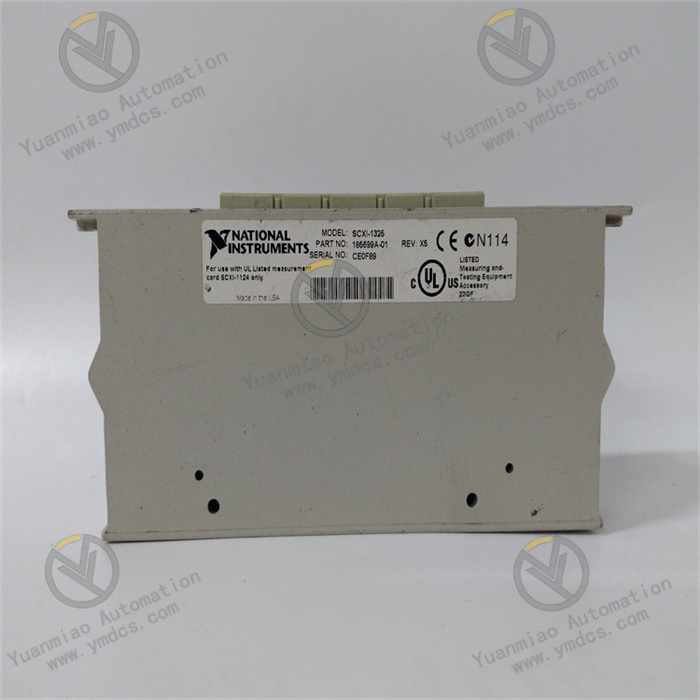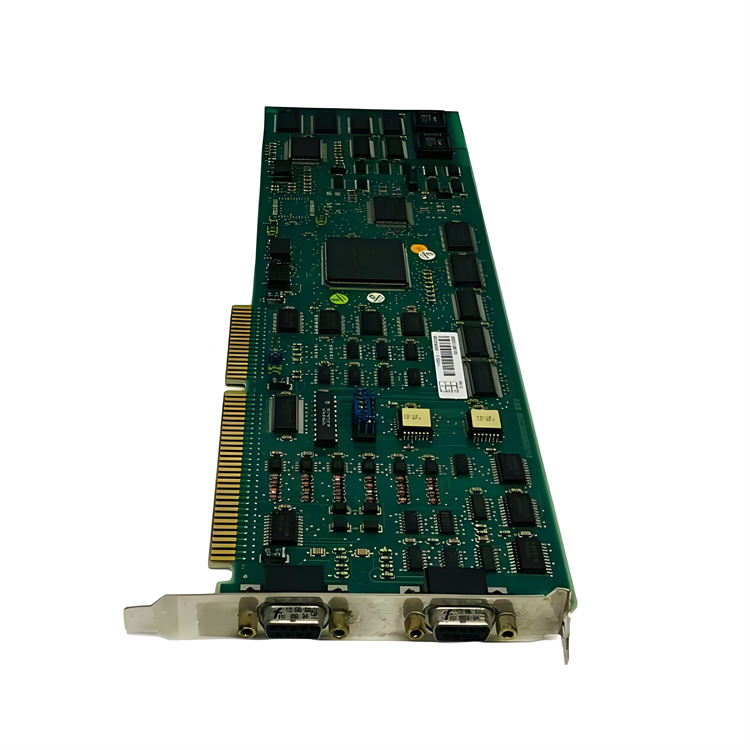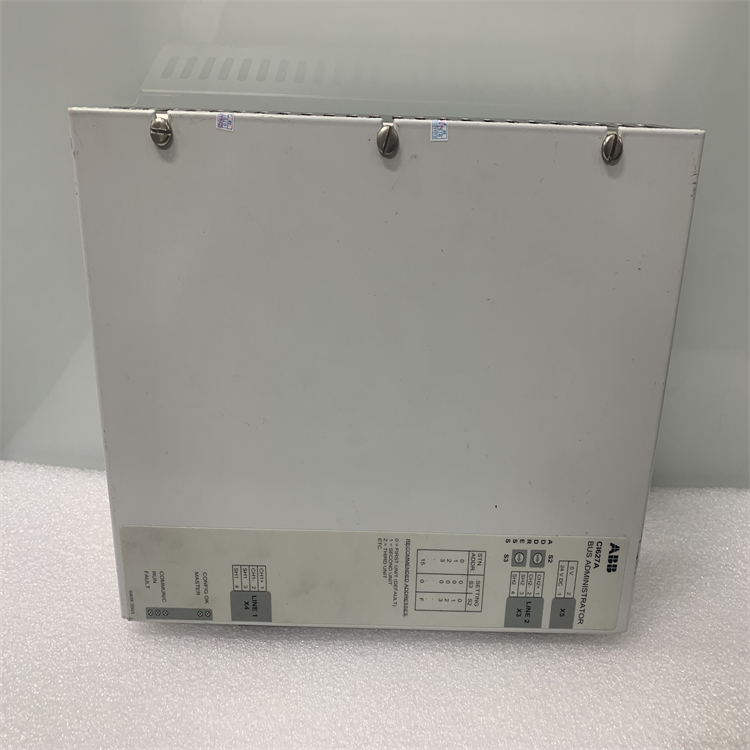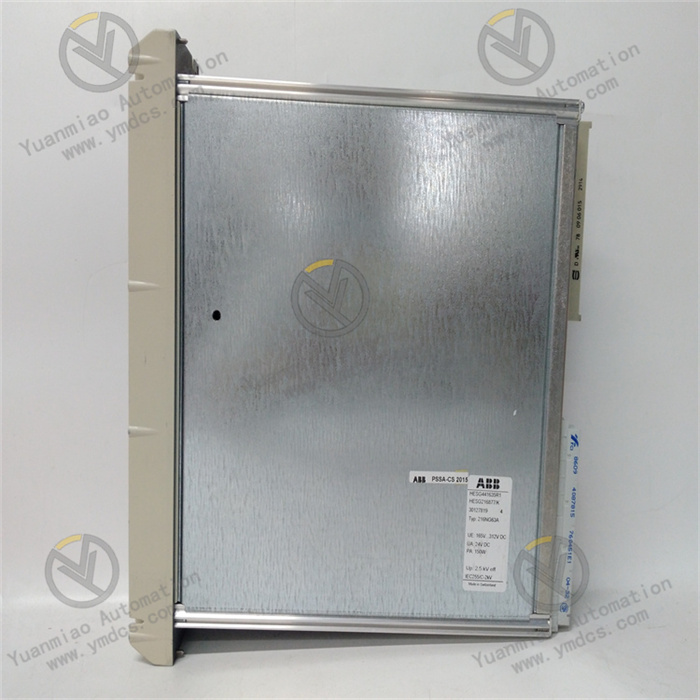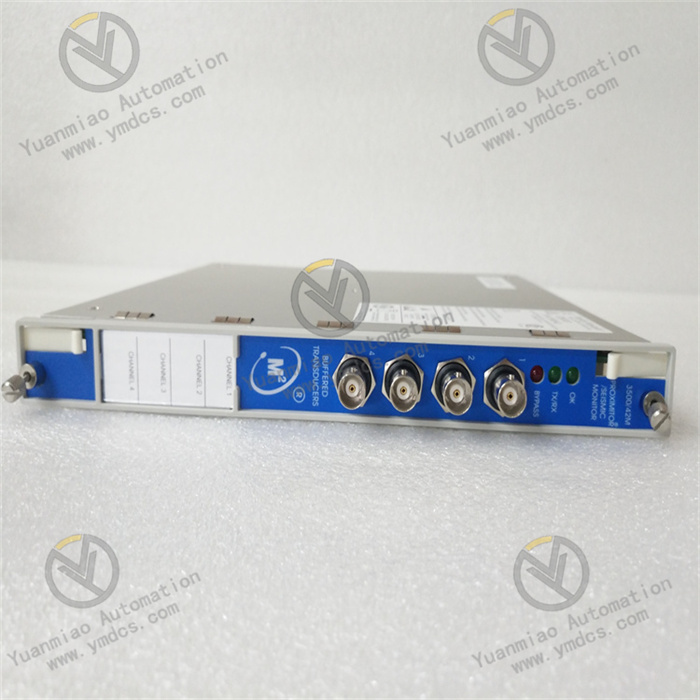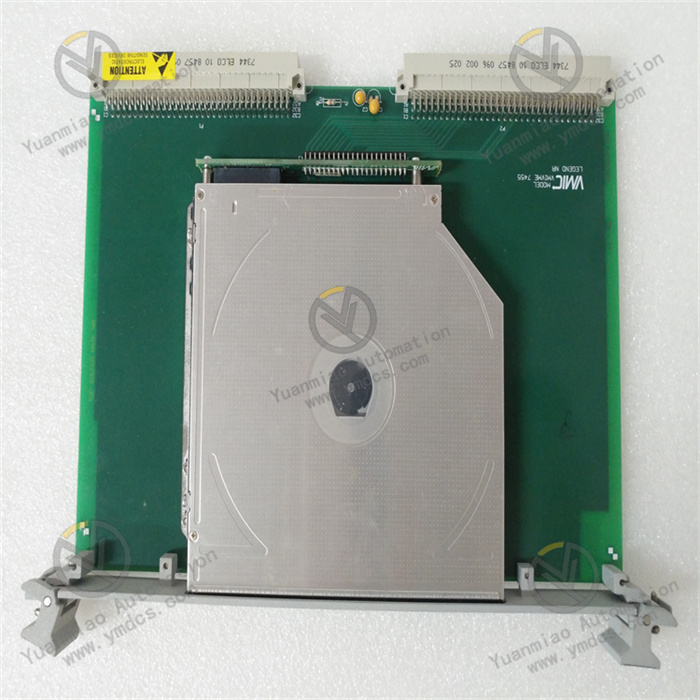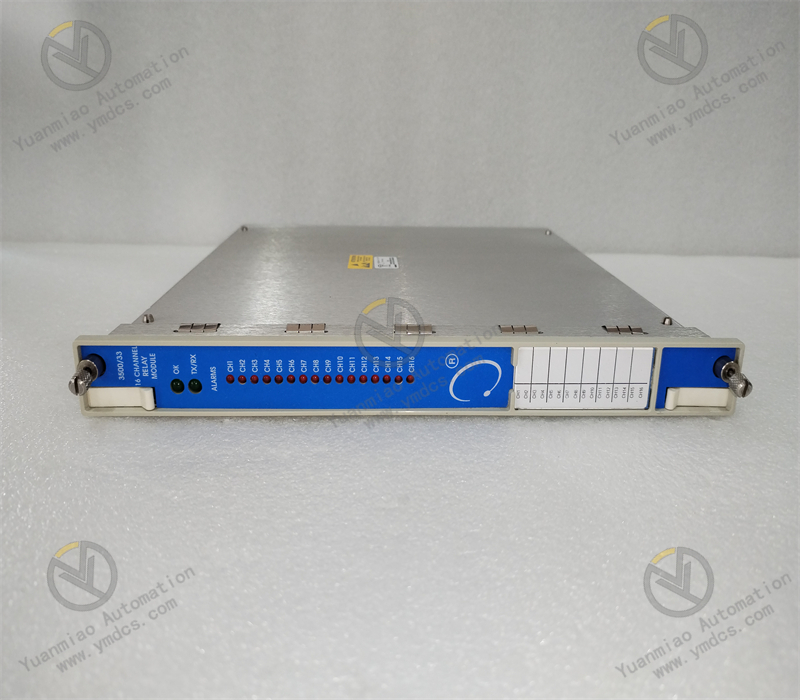Description
GE IS420UCSBH1A
I. Product Overview
The GE IS420UCSBH1A is a multi-protocol communication module based on the GE Mark VIe control system architecture. It must be used with Mark VIe controllers (e.g., IC698CPE030) and racks (e.g., IC698CHS010). Its core functions include:
- Enabling bidirectional data transmission between the Mark VIe controller and peripheral devices (e.g., VM600 MPC4, smart sensors, frequency converters) via multiple industrial protocols (e.g., Modbus RTU/TCP, PROFIBUS DP, EtherNet/IP);
- Supporting 8 serial communication ports (RS232/RS485) and 2 Ethernet ports to meet the communication interface requirements of different devices;
- Featuring communication link redundancy (dual Ethernet/dual serial links), data verification (CRC32), and self-diagnosis for faults (link interruption, protocol errors);
- Allowing configuration of communication parameters and status monitoring via GE CIMPLICITY HMI or Mark VIe Configuration Tool.
Its core advantages lie in "multi-protocol compatibility (covering mainstream industrial buses), high communication bandwidth (100Mbps full-duplex for Ethernet), redundant fault tolerance (no single point of communication failure), and wide environmental resistance (0°C~60°C)". It is particularly suitable for control systems requiring multi-device integration (e.g., DCS for thermal power units), continuous production equipment with high reliability requirements (e.g., refining and hydrogenation units), and complex industrial communication environments (coexistence of multi-protocol devices).
The IS420UCSBH1A module connects to 2 mechanical protection cards (for monitoring turbine generator vibration/speed) via the Modbus TCP protocol, and simultaneously connects to 4 frequency converters (for controlling feedwater pumps and forced draft fans) via the PROFIBUS DP protocol. When the VM600 MPC4 detects that the turbine generator vibration exceeds 12 mil, it transmits the "excessive vibration" signal to the Mark VIe controller through the IS420UCSBH1A (with a transmission delay ≤10ms). The controller immediately issues a load reduction command to avoid unit shutdown (with a daily loss exceeding RMB 3 million). In a 1.5 million t/a hydrocracking unit of a petrochemical plant, the IS420UCSBH1A integrates 10 smart pressure transmitters and 5 VM600 MPC4 units via the EtherNet/IP protocol, enabling unified transmission of "pressure data - vibration data - control commands" with a communication packet loss rate ≤0.001% and 2 years of continuous operation without communication interruption. In a hot rolling production line of an iron and steel plant, the module connects to 12 temperature sensors via the RS485 interface (Modbus RTU) to transmit roll temperature data in real time (with a sampling interval of 100ms), ensuring a steel rolling temperature control accuracy of ±5°C and increasing the product qualification rate from 97% to 99.5%.
The module adopts a "multi-interface modular + redundant communication" architecture:
- Communication Interface Design: Equipped with 2 10/100Mbps Ethernet ports (RJ45, supporting full-duplex) that support EtherNet/IP, Modbus TCP, and IEC 61850 protocols; 8 configurable serial ports (RS232 or RS485) that support Modbus RTU, PROFIBUS DP, and DF1 protocols. All ports feature photoelectric isolation (isolation voltage ≥2.5kVrms) to prevent on-site electromagnetic interference from affecting communication stability.
- Core Processing Unit: Built-in 32-bit ARM processor (operating rate of 800 MIPS) that supports parallel data processing and can handle data from 16 communication links simultaneously (e.g., 2 Ethernet links + 14 serial links); equipped with 8MB Flash (for storing communication configurations) and 16MB RAM (for caching real-time data) to ensure smooth high-concurrency data transmission.
- Housing and Protection: Adopts an industrial-grade metal housing, with dimensions conforming to 3U standard racks (19 inches) and an installation depth ≤200mm, compatible with Mark VIe standard racks; protection class IP20 (dust-proof and finger-proof); operating temperature range of 0°C~60°C, storage temperature range of -40°C~85°C, and relative humidity of 5%~95% (non-condensing), suitable for power plant control rooms and petrochemical cabinet rooms.
- Redundancy and Safety Design: Supports Ethernet link redundancy (MRP protocol, switching time ≤50ms) and serial link redundancy (dual RS485 port backup), with automatic switching to the backup link in case of a single link failure; built-in overvoltage protection (±15kV ESD protection for Ethernet ports) and overcurrent protection (≤500mA for serial ports) to prevent module damage caused by external circuit faults; complies with UL 1998 and CSA C22.2 No.14 standards to meet industrial safety requirements.
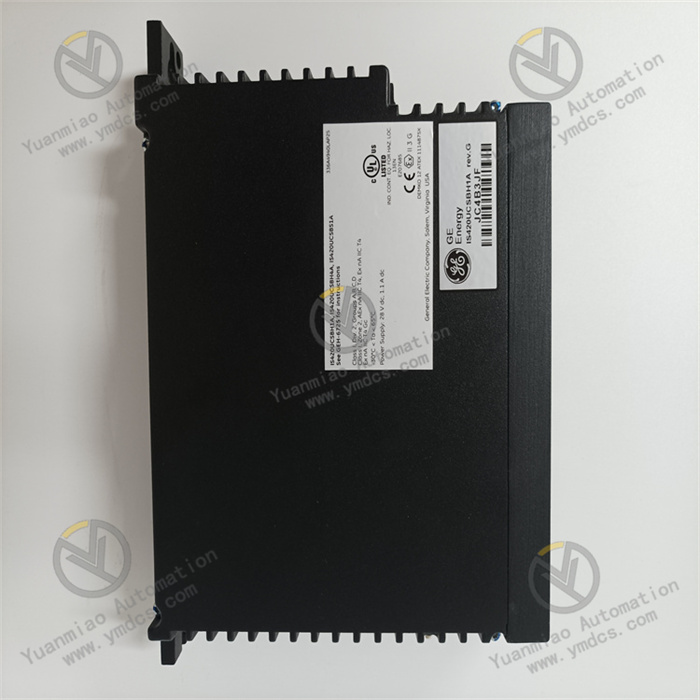
II. Technical Parameters
1. Communication Interface and Protocol Parameters
| Parameter Category | Specific Specifications |
|---|---|
| Ethernet Ports | 2 10/100Mbps RJ45 ports, supporting automatic negotiation of full-duplex/half-duplex; supported protocols: EtherNet/IP (ODVA certified), Modbus TCP, IEC 61850 MMS/SMV; transmission distance ≤100m (CAT5e cable) |
| Serial Ports | 8 configurable ports (RS232/RS485); RS232 transmission distance ≤15m, RS485 transmission distance ≤1200m (shielded cable); supported protocols: Modbus RTU (master/slave mode), PROFIBUS DP (slave), DF1; baud rate adjustable from 1200bps to 115200bps |
| Communication Bandwidth | Maximum throughput of single Ethernet link: 80Mbps (full-duplex); maximum throughput of single serial link: 115.2kbps (115200bps) |
| Data Transmission Delay | Ethernet Modbus TCP: ≤10ms (100-byte data); Serial Modbus RTU: ≤5ms (32-byte data) |
| Concurrent Connections | Supports 32 Ethernet TCP client connections; 16 serial Modbus RTU slave device connections |
2. Core Performance Parameters
| Parameter Category | Specific Specifications |
|---|---|
| Processor | 32-bit ARM Cortex-A9, operating rate of 800 MIPS, supporting hardware floating-point arithmetic |
| Storage Capacity | Flash: 8MB (for storing configuration files and firmware); RAM: 16MB (for caching real-time data and communication queues) |
| Data Verification | Supports CRC32 (Ethernet) and CRC16 (serial) data verification to ensure data transmission integrity |
| Redundancy Switching Time | Ethernet MRP redundancy: ≤50ms; Serial dual-link redundancy: ≤10ms |
| Diagnostic Functions | Supports link interruption detection, protocol error diagnosis, data timeout diagnosis, and interface fault diagnosis; fault information displayed via LED indicators and software |
| Firmware Upgrade | Supports online firmware upgrade via Ethernet (without interrupting communication), upgrade time ≤5 minutes |
3. Environmental and Electrical Parameters
| Parameter Category | Specific Specifications |
|---|---|
| Operating Temperature | 0°C~60°C (natural cooling without fans, relying on rack air ducts) |
| Storage Temperature | -40°C~85°C |
| Relative Humidity | 5%~95% (non-condensing), complying with IEC 60068-2-38 humidity cycle standard (1000 hours of fault-free operation) |
| EMI Resistance | Emission: EN 55032 Class A; Immunity: EN 61000-6-2 (ESD ±8kV contact discharge, EFT ±2kV power port, RF radiation 10V/m (80MHz~1GHz)) |
| Vibration Resistance | Complies with IEC 60068-2-6 standard: 10-500Hz, 1g acceleration (continuous operation) |
| Power Requirements | Powered by Mark VIe rack: +5V DC (±5%), maximum power consumption ≤12W; +24V DC (±10%), used for serial interface isolation circuit, maximum power consumption ≤5W |
| Safety Certifications | UL 1998, CSA C22.2 No.14, IEC 61010-1 (CAT III 600V) |
III. Functional Features
1. Multi-Protocol Compatibility and Multi-Device Integration, Simplifying Control System Architecture
With "full protocol coverage" as its core, the IS420UCSBH1A addresses the pain points of traditional communication modules, such as "single protocol and difficult device integration":
- Cross-Protocol Data Interaction: Supports mainstream industrial protocols including EtherNet/IP, Modbus TCP/RTU, and PROFIBUS DP. It can connect to VM600 MPC4 (Modbus TCP), frequency converters (PROFIBUS DP), and smart sensors (EtherNet/IP) simultaneously without additional protocol converters. In a thermal power unit, one IS420UCSBH1A replaces three dedicated communication modules (Ethernet + Modbus + PROFIBUS), reducing rack space occupancy by 60% and hardware costs by 40%.
- Flexible Interface Configuration: The 8 serial ports can be configured as RS232 or RS485 via software to adapt to devices with different communication distances (e.g., RS232 for connecting local HMI, RS485 for connecting temperature sensors 1200m away). In a refinery, the RS485 interface is used to connect to remote pump status sensors, avoiding signal attenuation caused by long-distance wiring.
- Unified Data Conversion: Converts device data from different protocols into a unified format recognizable by the Mark VIe controller. For example, it synchronously transmits vibration data from VM600 MPC4 (Modbus TCP) and speed data from frequency converters (PROFIBUS DP) to the controller, enabling "multi-source data fusion analysis". In a steel rolling production line, the controller can optimize rolling parameters based on both temperature and speed data through unified data conversion, increasing product accuracy by 2.5%.
2. Redundant Communication Design, Ensuring Uninterrupted Data Transmission
Targeting the characteristic of "severe consequences of communication interruption" in industrial control, the module ensures communication reliability through multiple redundancy mechanisms:
- Ethernet Redundancy: The dual Ethernet ports support the MRP protocol, with switching to the backup link within 50ms in case of a primary link failure. In a 300MW thermal power unit, when the primary Ethernet cable was accidentally broken, the backup link immediately took over communication, ensuring stable unit control and avoiding shutdown (with a loss exceeding RMB 3 million).
- Serial Link Redundancy: The 8 serial ports can be configured as 4 groups of dual RS485 redundant links. For example, when connecting 2 VM600 MPC4 units, each device is connected to the IS420UCSBH1A via 2 RS485 links, with switching within 10ms in case of a single link failure to ensure no loss of vibration data.
- Data Caching and Retransmission: Built-in 16MB RAM caches real-time data. When communication is temporarily interrupted (≤10 seconds), the cached data is automatically retransmitted after recovery to avoid data breakpoints. In a petrochemical hydrogenation unit, after a 5-second communication interruption and recovery, the module successfully retransmitted the pressure and vibration data during the interruption, and the controller did not experience misjudgment or incorrect actions.
3. High Bandwidth and Low Latency, Adapting to Real-Time Control Requirements
Through high-performance hardware and optimized communication algorithms, the module meets the strict real-time requirements of industrial control:
- High-Concurrency Processing: The 800 MIPS processor supports simultaneous processing of data from 16 communication links (e.g., 2 Ethernet links for connecting VM600 MPC4 and HMI + 14 serial links for connecting sensors and actuators), with a data throughput of 80Mbps and no lag or accumulated delay. In a hot rolling production line, data interaction with 12 temperature sensors and 4 frequency converters is completed within 1 second, ensuring real-time control of roll temperature.
- Low Transmission Latency: The Ethernet Modbus TCP transmission delay is ≤10ms (100-byte data), 5 times faster than traditional communication modules (with a delay ≥50ms). In the control of a turbine generator, the "excessive vibration" signal from the VM600 MPC4 is transmitted to the controller within 10ms, triggering a rapid load reduction command to prevent further vibration escalation.
- Priority Scheduling: Supports priority classification of communication data (e.g., "excessive vibration" signals set to the highest priority, and normal status data set to low priority) to ensure priority transmission of key control commands. In the auxiliary system of a nuclear power plant's conventional island, the "excessive pump vibration" signal is set to the highest priority, ensuring priority transmission even during heavy communication loads, with a response time ≤10ms.
4. Convenient Diagnosis and Maintenance, Reducing Management Costs
The module simplifies on-site maintenance through intelligent diagnosis and user-friendly configuration tools:
- Intuitive Status Indication: The panel is equipped with 12 LED indicators (2 for Ethernet status, 8 for serial interface status, and 2 for power status). For example, when the "primary Ethernet link fails", the corresponding LED flashes red, allowing maintenance personnel to locate the faulty link within 30 seconds.
- Software Diagnosis and Monitoring: Real-time communication status (e.g., link utilization, packet loss rate, delay) can be viewed via the Mark VIe Configuration Tool, and communication logs (in CSV format) can be exported. In fault troubleshooting at a power plant, the log was used to quickly locate the "PROFIBUS DP slave address conflict" issue, reducing troubleshooting time from 4 hours to 30 minutes.
- Online Configuration and Upgrade: Communication parameters (e.g., baud rate, protocol type) can be modified and firmware can be upgraded online via Ethernet without powering off or disassembling the module. In the maintenance of a refinery, 8 IS420UCSBH1A modules were upgraded online in only 1 hour, without affecting unit operation.


